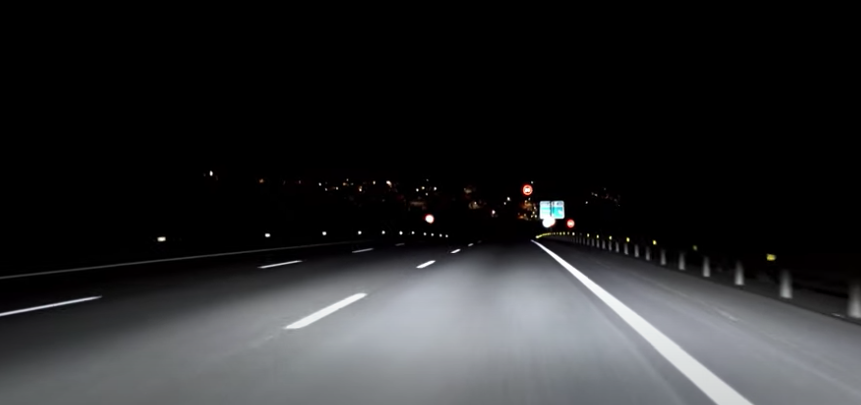During the winter months especially, good all-round lighting is vital for safe driving, so you must check for blown bulbs and failed lights regularly.
Day time lights
During the day, there are still instances where headlights should be used. They are there for more than just dark or foggy driving. Any reduction in natural light should cause you to put your headlights on, such as driving on a more unlit tree-lined road or if a storm is approaching and light has reduced.
Since 2011, all new cars have been fitted with daytime running lights that come on automatically, but this only applies to the front headlights. In darker conditions, you will still need to manually switch on your rear lights and main beam or dipped beam headlights.
Night time lights
Driving lights at night should be used at all times. When switching between dipped and full beam, it is important to ensure the full beam is off when approaching other drivers so as not to cause glare and dazzle. The rules are that headlights should always be used half an hour before sunset and half an hour after sunrise. When overtaking, it is imperative to lower the beam until you have overtaken the car in front. If you find yourself on the end of unwanted headlight dazzle, you should slow down or pull over until your eyesight returns to normal. If you are travelling under 30MPH and in a built-up area, side lights alone are not illegal, but most conscientious drivers will put their headlights on.
Brake lights
You must check your brake lights regularly before any journey, as blown bulbs can be a chargeable offence. You could be pulled over and cautioned. You could receive a fixed penalty of up to £60. You could receive a 14-day notice to have the car fixed and checked, or your vehicle could be taken off the road immediately. The important thing to remember when driving is that your brake lights will alert the following traffic of your intentions. You could risk a rear-end accident if you brake suddenly without brake lights. It is important not to keep the brake lights on if stationary in a queue. You should apply the handbrake and put it into neutral gear, as full brake lights can cause glare to the drivers behind.
Hazard lights
Hazard lights should only be used when stationary or to alert drivers behind that you are experiencing difficulties and need to slow down and pull over. They must be used at all times when being towed. On a dual carriageway or motorway, hazard lights can be used to show others of an obstruction or an accident ahead, but then should be switched off once you know the drivers behind have been alerted.
Fog lights
Driving in fog is never a pleasant experience as it limits your visibility and could be a worry if oncoming traffic cannot see your vehicle. All cars are fitted with at least one rear fog light; most cars will have front fog lights as standard. It is not a legal requirement to use fog lights, but it is sensible to do so that other drivers can see you in heavy fog. It is important not to leave your fog lights on when visibility is normal, and doing so can land you in trouble with a £50 fine, as dazzling fog lights can cause glare and accidents.
Sidelights and indicators
Sidelights and registration plate lights should be lit between sunrise and sunset, and it is a chargeable offence if not used or not working. Indicator bulbs should be checked regularly, and the rear indicators, if they show less colour (i.e. faded), they will fail an MOT as they could be confused with reversing lights.
Windows
Windscreens that are tinted can reduce visibility, and the legal requirement is that they give at least 75% visibility through the front windscreen and 70% through the front side windows. Anything less than this will be illegal, although there is no law against complete tinting for the rear windows for privacy. Dirty and smeared windscreens must be cleaned for optimum vision, and it is wise to check your screen wash before every journey.
It is also a good idea to clean the inside of your windows properly. This will help to minimise glare and dazzle. We often wipe the inside of windows, especially when condensation is there, but wiping inside windows with old cloths or whatever is to hand will not clear windows well. You can also find yourself in trouble if you have a chip or crack in the line of visibility on the front windscreen; this will fail an MOT and render your car illegal, and the insurance will not be valid should you have an accident.
It is wise to get into a habit of checking lights, windows and screen wash before setting out on any journey, as there is no legal excuse that can be used for driving without the correct lights on. Also, if you are in an accident that may not be your fault, your car will be checked, and if lights, windows, or wipers are not legal, you could find your claim rejected.

